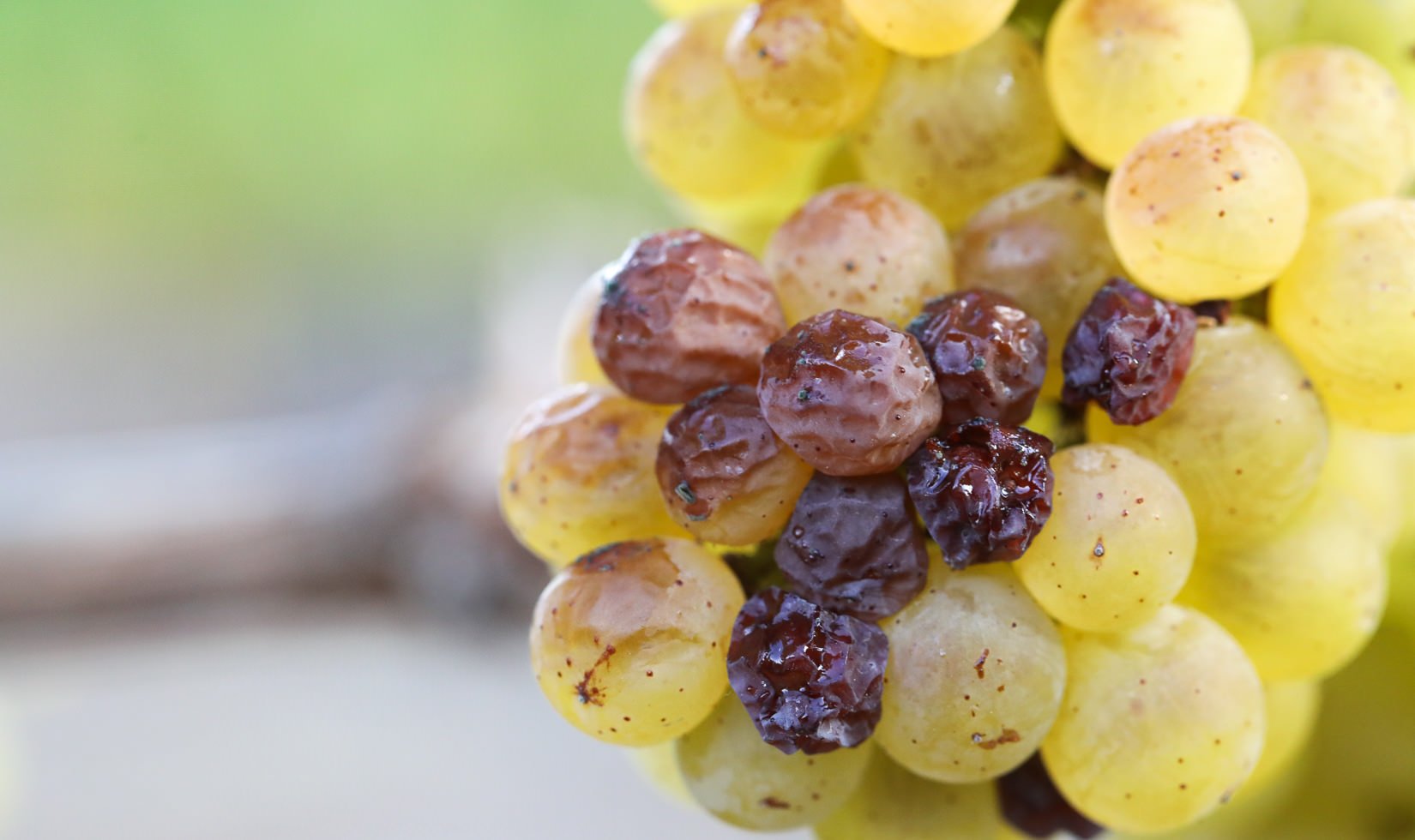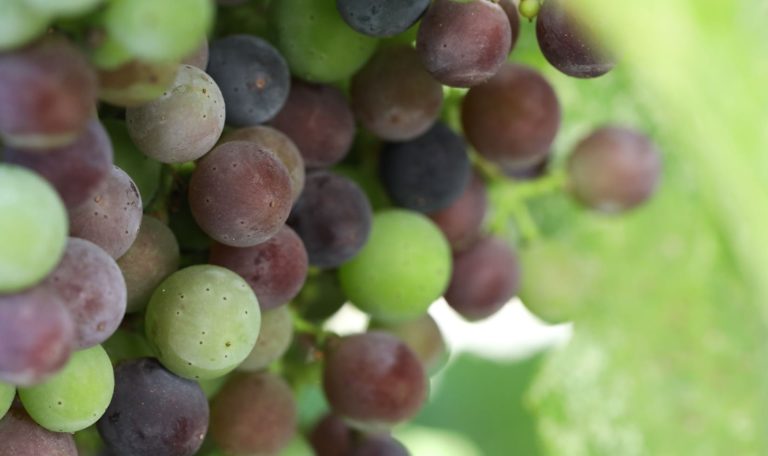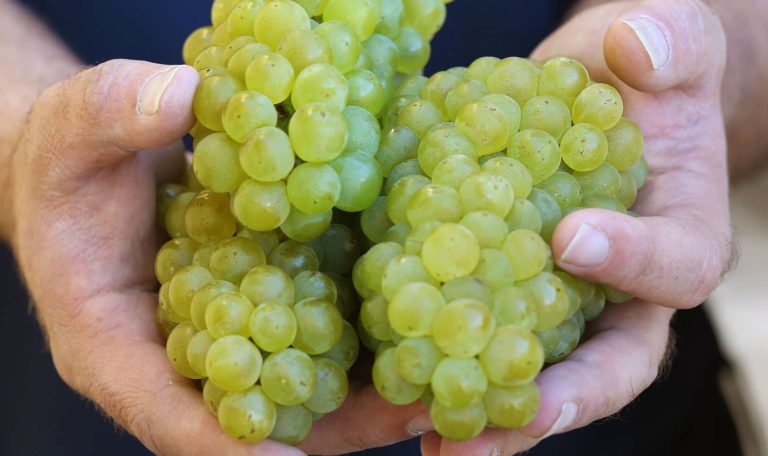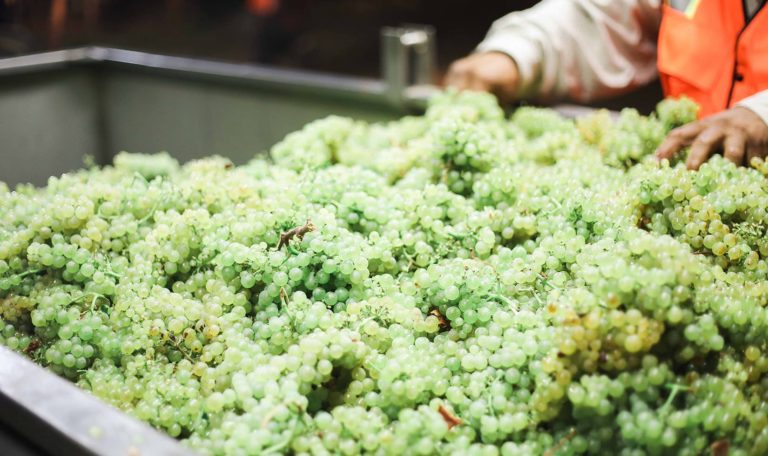After a cool, foggy August, the 2017 Sonoma County grape harvest kicked off at Jordan Winery on August 30 with Russian River Valley chardonnay grapes—all night-harvested by hand. With continued moderate weather, we were hoping to allow ripening to continue in the rest of our chardonnay vineyards, but Mother Nature had other plans and smacked California’s Bay Area with a record heat wave over Labor Day weekend. Hotels in San Francisco were at capacity with residents seeking air-conditioned rooms. I can’t remember a hotter weekend in September, and I’ve lived in Northern California my entire life.
This harvest update discusses how the 2017 California heat wave has affected wine grapes and offers our initial impressions of the 2017 vintage quality so far for Jordan Russian River chardonnay and Alexander Valley cabernet sauvignon, merlot and petit verdot grapes.
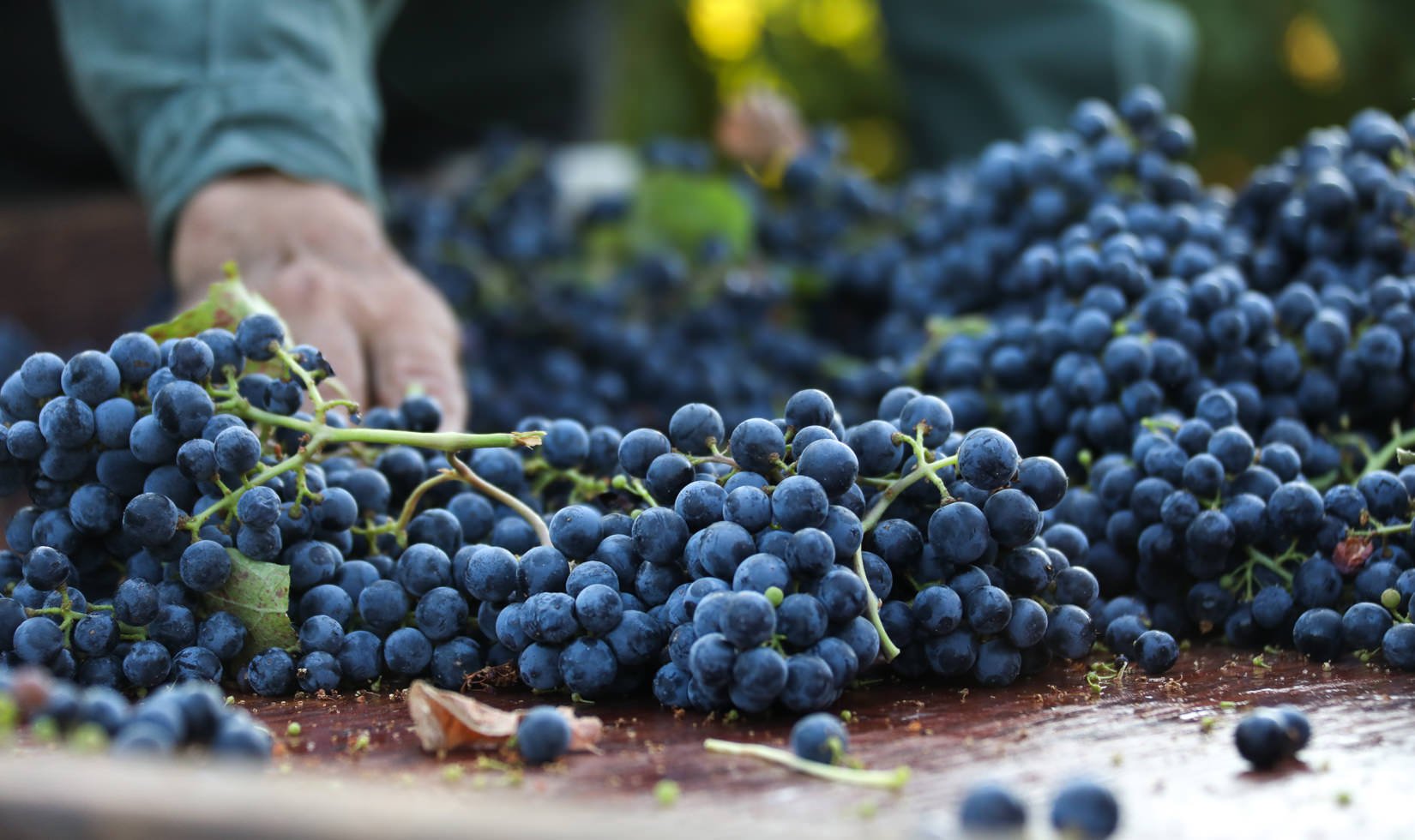
Did winemakers enjoy a relaxing Labor Day weekend? Hardly. A sizzling heat wave with record-breaking temperatures—112 degrees in Healdsburg and 110 in Santa Rosa—quelled our high spirits. Although Healdsburg did not break its record of 116 degrees, set in 1972 (the year Jordan Winery was founded)—it still felt as if we were standing outside a casino on the Las Vegas Strip when we stepped out of our trucks at the vineyards.
But, our grapes were not ready to be harvested.
What happens to a grapevine during a heat wave is quite simple: the plant shuts down to protect itself. It is impossible for a vine to mature fruit at temperatures in the upper 90s and above. All the plants can do is protect themselves by shutting down respiration (the intake of oxygen and the release of carbon dioxide) and hope they can make it to the evening when it cools down. So, if the grapes are not fully ripe and ready to be harvested, rushing and picking them during a heat wave in harvest season is not the ideal approach since the grape flavors haven’t fully developed. Our grape growers always get anxious to pick when challenging weather conditions arise. My usual response is this: “You want to pick? We just finished veraison! Relax, my friend. Take care of the fruit through the heat and wait for the vines to work their magic…” With that much heat, the greater worry of a winemaker is not harvesting for sugar but harvesting for flavor.
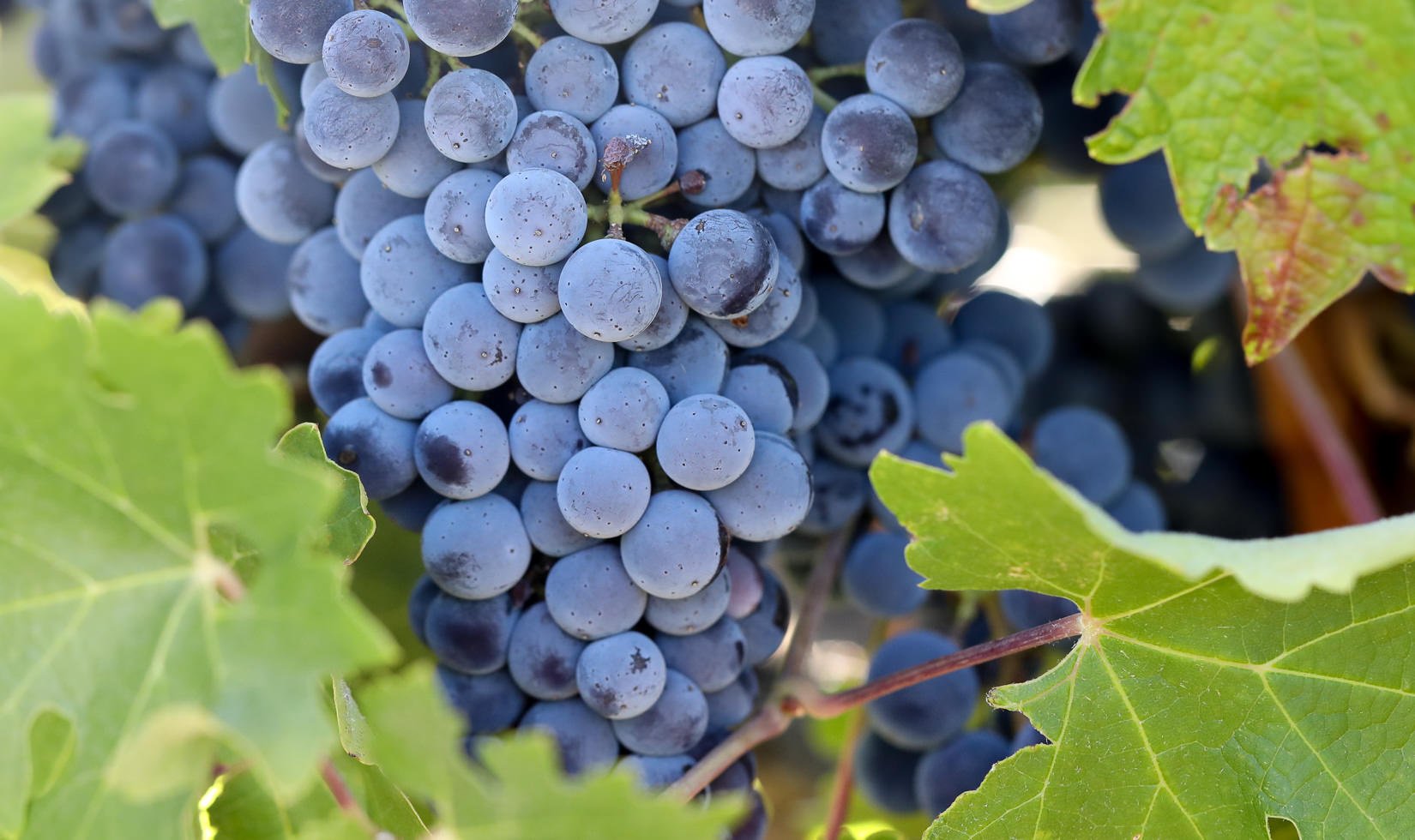
Winemakers have two choices to save their precious grapes during harvest heat waves like this: harvest unripe fruit or irrigate the vineyards, letting the water both cool the fruit and keep the plants from getting too dehydrated. But, there is a limit to what a grapevine can endure. These plants are not cactuses. Once the stomates (microscopic openings or pores in the plant leaves) close to prevent water loss through the leaves, respiration and photosynthesis shut down. Maturation is essentially stunted until weather conditions improve. If the heat continues day after day, then the vine aborts the fruit in a last ditch effort to stay alive.
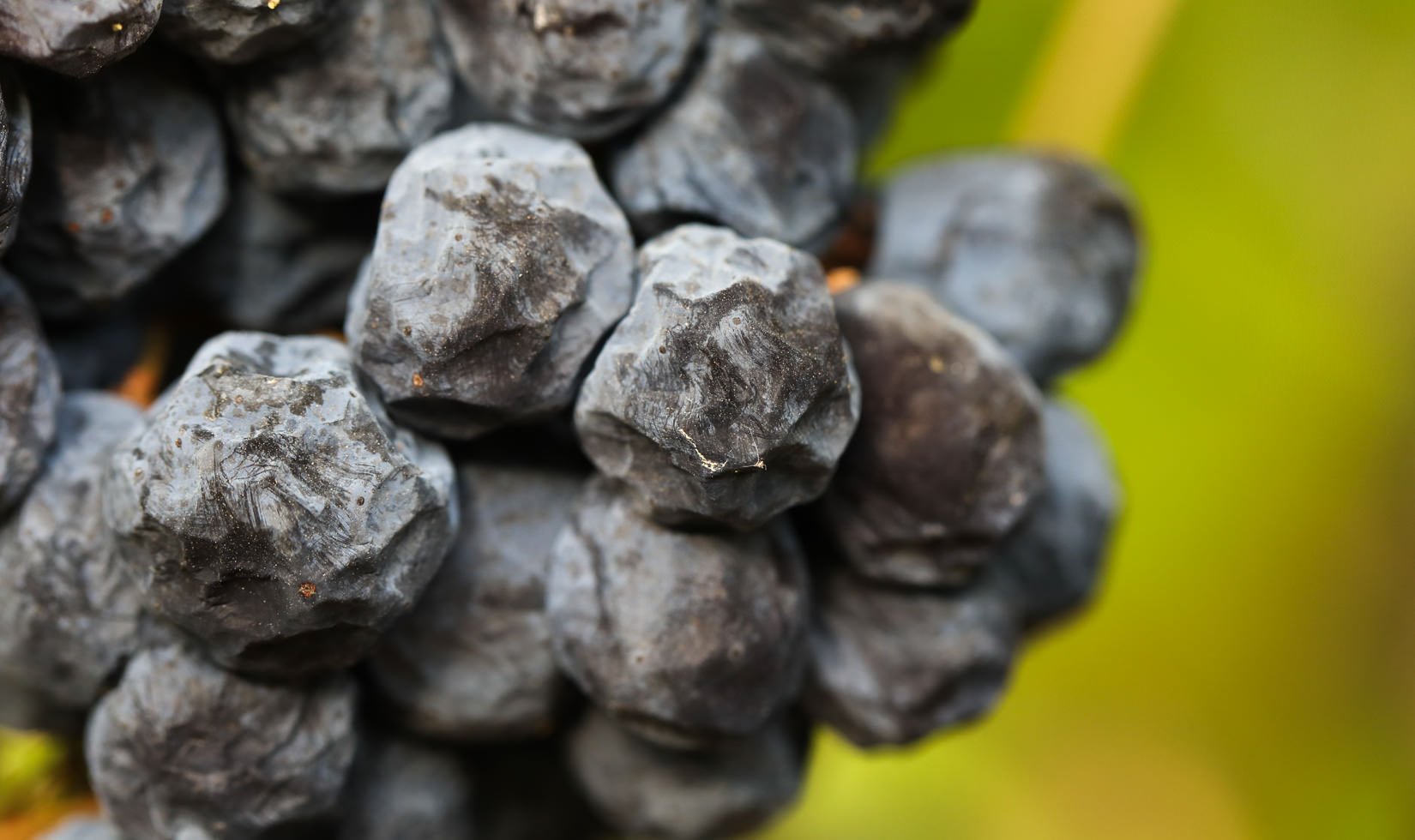
At Jordan, we opted for the latter approach. Watering grapevines can help aid against dehydration, but many winemakers try to avoid irrigating vineyards too close to harvest, as it can dilute flavors. Despite the constant irrigation applied to the vines, the clusters will still dehydrate as the vine pulls water out of the cluster to survive in the heat. It is the consecutive days of heat forcing the vines to react in this way that winemakers and growers fear every harvest. Fortunately, the brutal heat was contained in a few days.
Grapes tested following the heat spell showed very high sugar readings, but two days later, sugar levels dropped back to their normal rate of maturation. Thankfully, we are once again back to the normal time frame for harvesting our white and red grape varieties in Sonoma County. After that first harvest on August 30, we waited to harvest two other chardonnay vineyards in the middle of the night later in the week after the temperatures cooled down a bit. (Night harvesting is the best approach for preserving acidity and purity of fruit flavors, as well as ensuring comfortable work temperatures for the picking crew.) Now, we are waiting a few more days to let the last of our chardonnay grapes ripen. The 2017 Russian River chardonnay harvest could be complete at Jordan by this weekend.
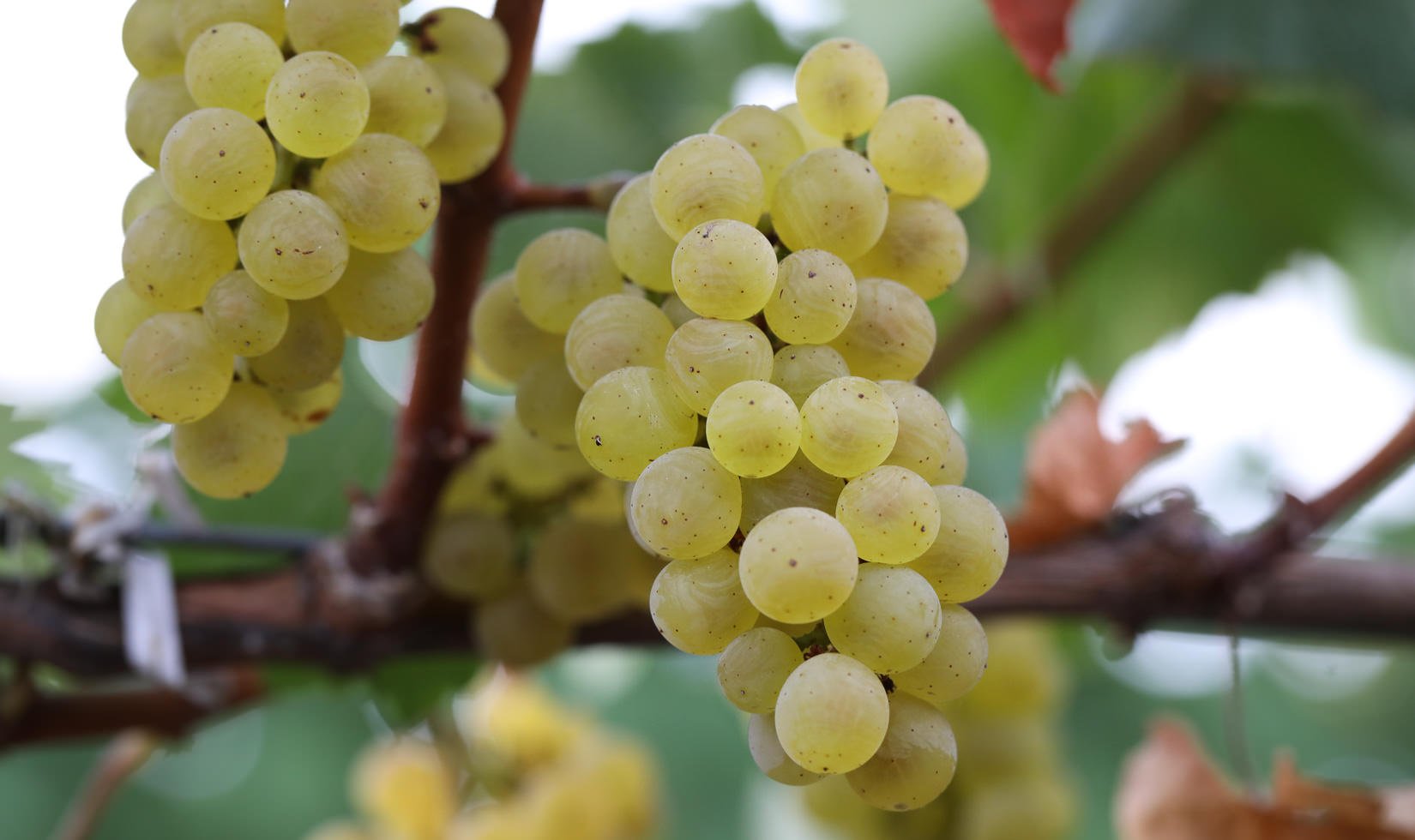
Has the 2017 California heat wave damaged wine grapes? It all depends on the vineyard and wine region. In Napa Valley and Lodi, there have been reports of red wine grapes turning to raisins after the 2017 California heat wave. One Napa Valley vintner reported losing 50 percent of her crop in some vineyard blocks to the heat wave. Grapes turning to raisins would suggest that the vineyards were dry-farmed and the grower decided not to irrigate or that too many leaves were removed, leaving the grapes with no shade. Ripeness levels of specific grape varieties during the heat wave could also be a factor. William Allen of Two Shepherds Winery, who sources grapes from Sonoma, Mendocino, Santa Barbara, Contra Costa and Lodi, says his Lodi cinsault grapes were under-ripe and only two-thirds through veraison when the heat wave hit, and he harvested those grapes this morning—little to no damage. But another Lodi winemaker said his zinfandel and syrah, which were further along in ripeness, got fried and will require hand-sorting to remove the raisins.
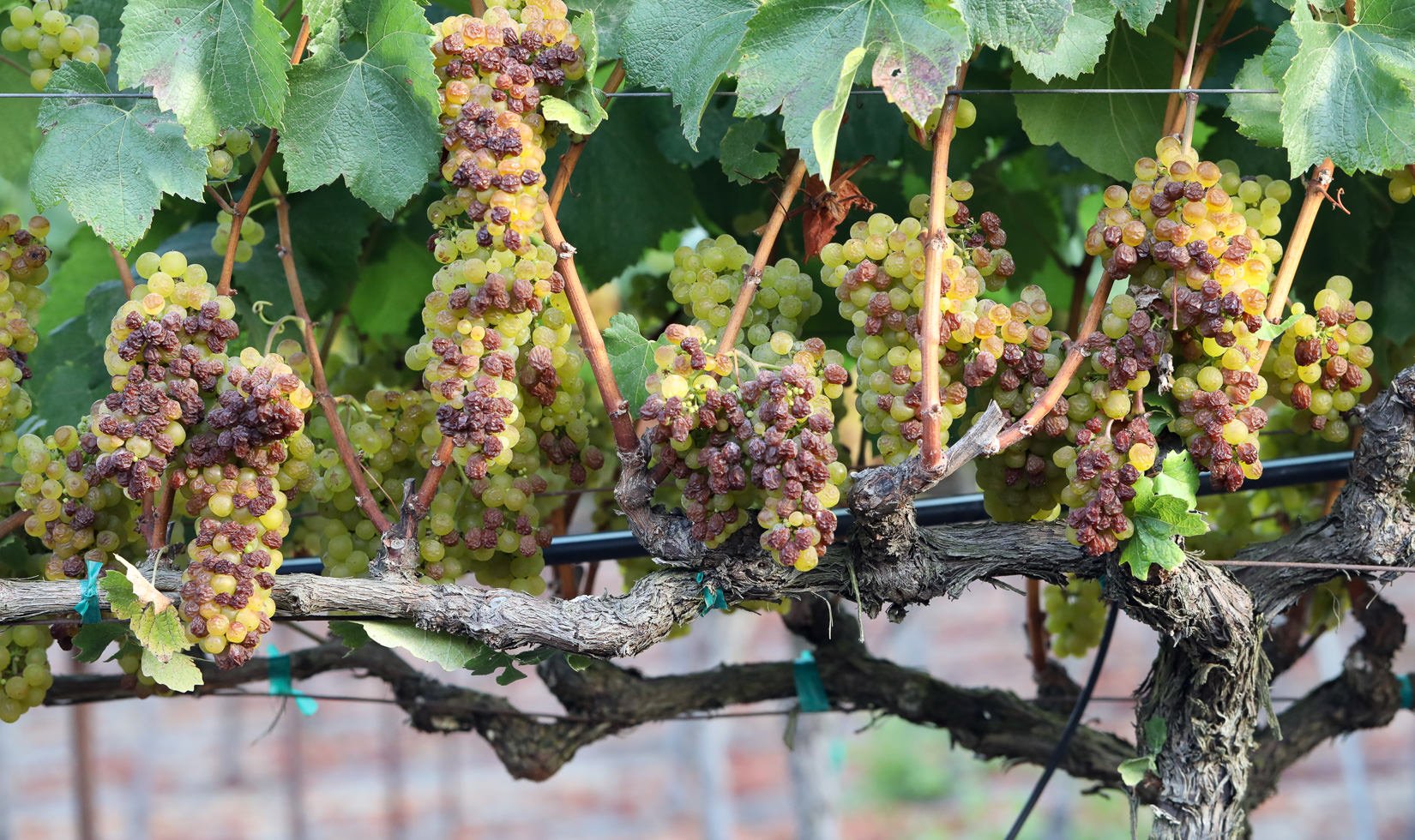
In Russian River Valley where we farm chardonnay grapes, the damage to fruit in our grower vineyards luckily has been minimal. We’ve seen only a few raisins in the vineyards, but one neighboring vineyard just 30 feet from ours (pictured above) is baked. (The leaves were removed too soon, and the vine is carrying too much fruit.) Our friend Jamie Kutch from Kutch Wines also said he surprisingly didn’t see any raisins at his Sonoma Coast chardonnay and pinot noir vineyards, which he attributed to the vines being stronger after the record winter rainfall. In a recent San Francisco Chronicle article, Jasmine Hirsch of Hirsch Vineyards estimated that 10 percent of her crop was lost.
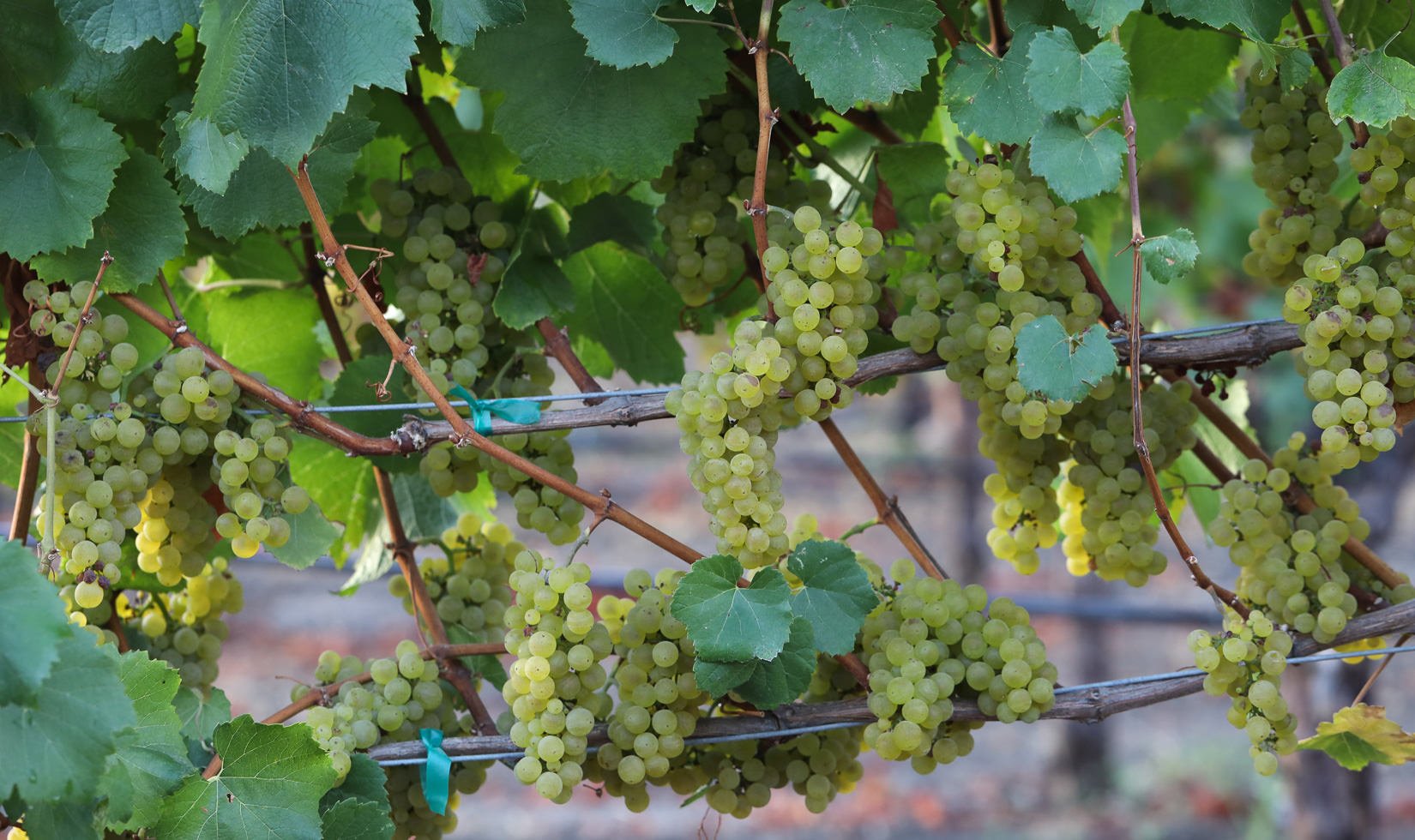
Grapes also get sunburned just like humans, especially chardonnay, which has more delicate skins than reds like cabernet sauvignon and merlot. Many of our chardonnay grapes received some reprieve with leaf canopy shade, and we irrigated the grapevines with water leading up to and into the Labor Day weekend heat wave. This year, it was extremely difficult to make the decision on if and when to remove leaves to avoid sunburn or other heat damage. We had at least three heat spikes before the Labor Day weekend record breaker. Every time I talked to a grower about leaf thinning, I would change my mind and stop them in order to get through a heat spike. Despite these efforts, some of our chardonnay vineyards had minor sunburn in isolated areas, which can bring a slightly bitter taste to skins and grape juice, so we will combat this by tasting our press juice methodically and stopping the press as soon as we taste any bitterness.
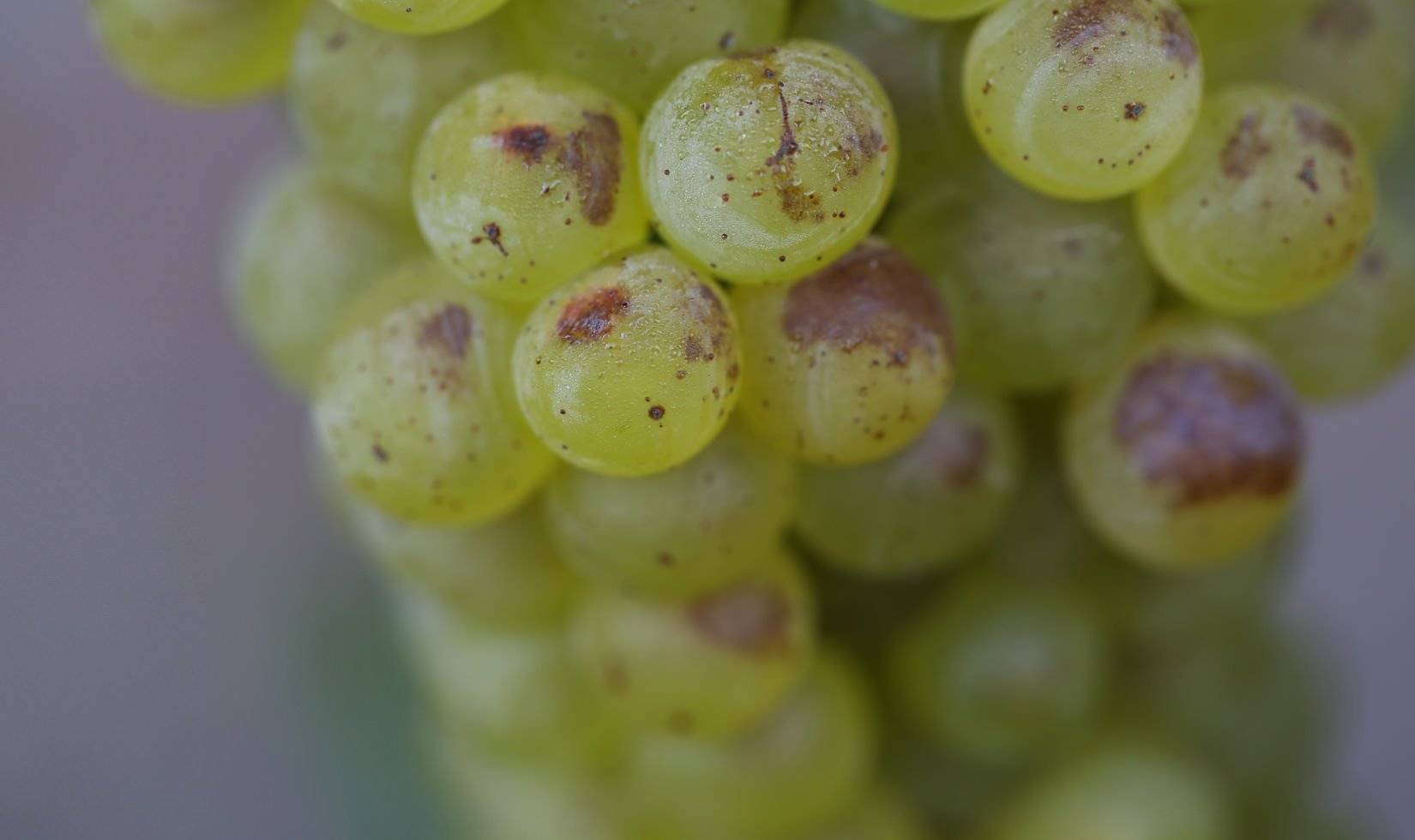
The most significant impact the heat wave had on the Jordan chardonnay grapes was quantity—the clusters are small, about 25 percent below normal weight—attributable to the other summer heat spikes that occurred as the berries were forming. But, our press yields are just 10 percent below average, and those smaller clusters are actually carrying a good amount of juice inside. The first few presses of 2017 chardonnay juice tastes quite nice—bright aromas and crisp flavors of apple, pear and peach.
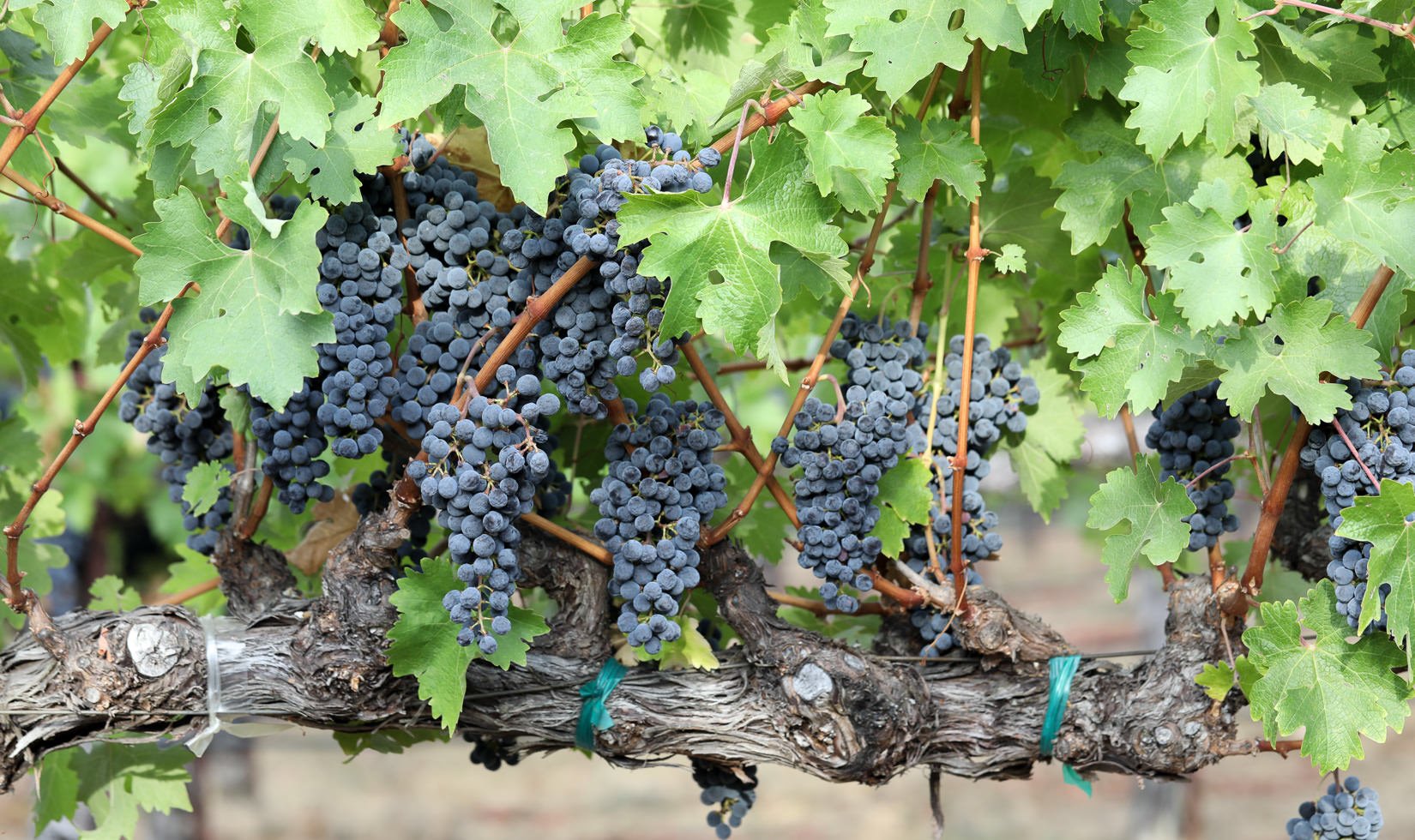
In the Alexander Valley where our Bordeaux grape varieties are grown, including cabernet sauvignon, merlot, petit verdot, malbec and cabernet franc, we also irrigated our estate vineyard blocks to keep the grapevines hydrated and asked our grape growers to do the same. This minimized the possibility of grapes turning to raisins. Due to the canopy management and afternoon shade those leaves provided, sunburn to cabernet sauvignon and other Bordeaux grapes has been minimal as well. Our estate petit verdot experienced about 15-20 percent damage, so our team is spending the next three days trimming off any grapes that are shriveled.
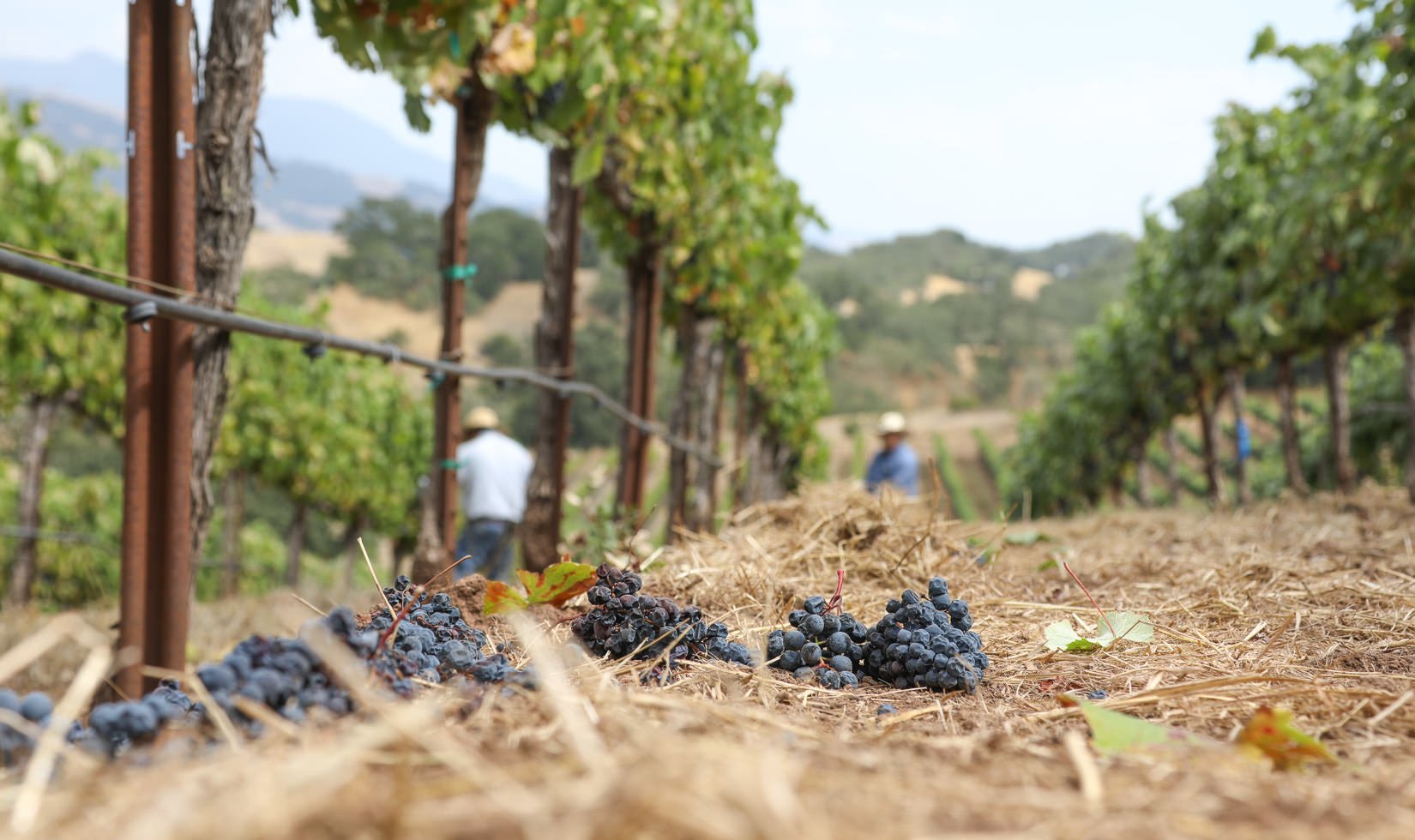
Making the decision of when and if to remove leaves was equally challenging for red wine grapes. We finally decided to pull leaves during veraison—a labor-saving move where we could drop fruit (veraison thinning) and thin the leaves around the fruit zone simultaneously. The remaining grapes on the vine benefited from this practice. We’ve harvested only merlot grapes from Munselle Vineyards and Cox Vineyards in Ukiah so far, and the fruit looks great. Yields are average, and time will tell if other red wine grapes experience a decrease in berry size and thus juice quantity as we bring those gondolas to the winery. Sugars spiked during the heat wave and dropped 2-3 brix after the heat, as the vine recovered. We expect to begin picking the first Jordan cabernet sauvignon grapes in two weeks, as current sugar levels are only at 21-22 brix in the Geyserville area. Merlot and malbec will be harvested first, probably this weekend.
Overall, the Bordeaux variety grapes look in very good condition, but without exception, every grower I have talked to—and I mean every grower—has said, “This is the craziest year I’ve ever seen.” Mother Nature seems to be suffering from bipolar issues. Rain is in the forecast for tomorrow. Thank God this is not my first harvest!
